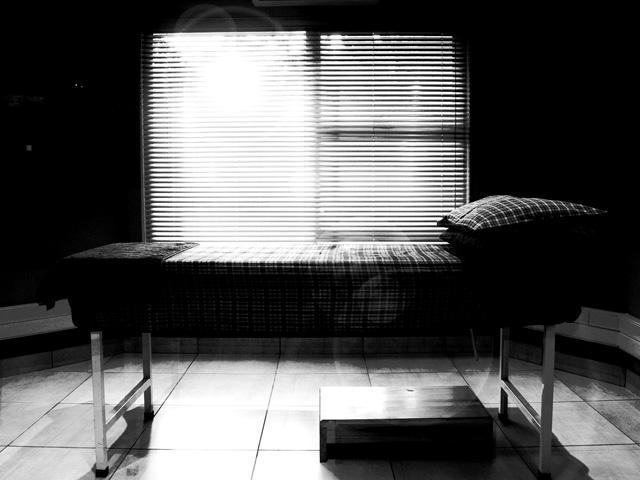
Rustenburg, 0299
Tel: +27 (0)14 592 8322
Netcare Ferncrest/Life
Peglerae/Medicare
Tel: +27 (0)14 592 8322
Knee Rehabilitation after surgery
(Total Knee Replacement)
GENERAL INFORMATION AND ADVICE:
Number 1
Crutches or other assistive devices should be used as prescribed. (See exercises for instructions on how to walk and for climbing up and down stairs. Be very careful of any turning movements at the knee. You may put full weight on the leg unless told otherwise.
Number 2
If you have received orthopaedic stockings use them as prescribed. They are used to control swelling and to prevent blood clotting.
Number 3
If your calf becomes swollen or painful or your knee becomes hot or red, contact the doctors’ rooms.
Number 4
Try to keep your leg elevated when you are resting to reduce the swelling in your leg. Put your foot up on the sofa so that your ankle is higher than your heart. Do not put a pillow under the knee as it increases the risk for a fixed flexion deformity/extension lag.
Number 5
When sitting bend your knee as far as pain allows. When lying down keep the knee as straight as possible.
Number 6
Be very careful of slipping on wet surfaces, steps etc. No sudden movements with the knee.
Number 7
When dressing, dress the operated leg first up to the knee, dress the healthy leg up to the knee and then pull the pants over your buttocks. Be very careful to not turn the knee in or out.
Number 8
You may sleep on your back or on your sides. Put a pillow between your knees when lying on your side.
Number 9
For swelling and pain ice and heat can be used (See exercises for time specific management). If your knee is very swollen, lift the end of your bed.
Number 10
The dressings must not be taken off until your post-operative appointment at the clinic. The dressing must be kept clean and dry at all times.
Number 11
No driving while your knee is recovering. Only start driving when you can safely drive without any pain and your leg is strong enough to perform all the nessasary actions.
Number 12
Please follow the exercises prescribed. Physiotherapy is very important to insure that the knee is fully rehabilitated and functional. It is very important to remember that walking is the best exercise and that we want as much movement as possible as soon as possible.
Number 13
Consult your physio for a biokineticist referral if you want to start doing gym exercises. The following exercises should preferrably never be done again: a) leg extentions
Number 14
No jogging for at least 3 months. No sport participation for at least 9 months. No breast stroke kicking for 6 months.
EXERCISES:
0-2 Weeks
EXERCISES SHOULD NEVER BE EXCESSIVLY PAINFULL
REPEAT ALL EXERCISES APPROXAMITALY 10 TIMES
1 - Breathing Exercises
a. Sit or lie down comfortably.
b. Breath in through your nose.
c. Breath out through your mouth.
d. Keep your shoulders relaxed.
1. Take a deep breath in and out.
2. Take a deep breath in, hold for 3-5 seconds and breath out.
3. Take a deep breath in, then a bit more in, and breath out.
2 - Circulation exercises to prevent blood clotting:
a. Footpumps
1. Keep your knee still.
2. Move your foot up and down.
b. Patella mobs
1. Sit with your knee straight and relaxed.
2. Hold your knee cap between your hands.
3. Move it up and down.
4. Move it from left to right.
3 - Static Exercises
a. Quadriceps
1. Sit with your knee straight.
2. Push your knee as flat into the bed as possible.
3. Hold 5-10 seconds.
b. Gluteus
1. Lie down on your back with your knee straight.
2. Squeeze your buttocks together.
3. Hold 5-10 seconds.
c. Calves
1. Sit down with your knee straight.
2. Point your toes.
3. Hold 5-10 seconds.
d. Hamstrings
1. Lie down on your back with your knee straight.
2. Push your heel down into the bed.
3. Hold 5-10 seconds.
4 - Active Exercises
a. Straight leg raise
1. Lie down on your back.
2. Keep your knee straight and quads tight.
3. Pick your foot up towards the ceiling, bending at the hip. Make sure not to lift the foot to high (10-15 cm off the bed is enough)
4. Lower your leg slowly.
b. Abduction
1. Lie down on your back.
2. Slide your leg outwards.
3. Slide the leg inwards until it touches the other leg.
5 - Knee extension range
a. Feet on pillow
1. Lie on your back or sit with your knee straight.
2. Put a pillow under your ankle.
3. Let your knee hang towards the bed.
4. Hold this position for 2-3 minutes
6 - Knee flexion range
a. Heelslides
1. Keep your heel on the bed.
2. Move your heel to your buttock as far as possible.
3. Hold for 5-10 seconds.
4. Straighten your knee again.
b. Side of bed
1. Sit over the side of the bed.
2. Make sure your thigh is supported.
3. Bend your knee back as far as possible, you may assist with your healthy leg.
4. Straighten the knee as far as possible, assist with your healthy leg.
5. Once you are able to complete this without difficulty, repeat the exercise without assistance of the healthy leg.
7 - Ice for swelling and pain:
a. Cover the surgery with a clean sheet of plastic or a towel in order the protect the wounds and dressings.
b. Put an ice pack over your swollen or panful areas.
c. Keep it on for 10-15 minutes.
d. You can do this 3 times per day
8 - Mobilisation
a. Please not that it is important to move as much as possible.
b. Please walk for atleast 5 min every hour if pain allows.
c. Please try to climb some stairs atleast 3 times daily if pain allows (even if it is just one step atleast
try.)
d. (see number 9 for instructions for mobilising with crutches)
9 - Crutches
a. Walking
1. Find your balance.
2. Move both crutches forward.
3. Move your operated leg forward. If you are allowed to, put the foot down on the floor, otherwise you can keep it in the air.
4. Bring the healthy leg forward, try to move it further forward than the operated leg.
5. Continue in this order.
b. Climbing up stairs
1. Find your balance.
2. Climb up the stair with your healthy leg.
3. Move your operated leg forward/up.
4. Bring the cruthes up onto the step.
5. Find your balance before continuing upwards.
c. Climbing down stairs
1. Find your balance.
2. Move your crutches down onto the floor.
3. Move your operated leg forward/down.
4. Climb down with your healthy leg.
5. Find your balance before continuing down.
d. Stand up with crutches
1. If possible sit on a chair with arm rests. Put one hand on the chair and one on your crutches.
2. Shift your weight forward – if you have a hip replacement please lean back instead of forward.
3. Putting your weight onto your healthy leg, push up into standing.
4. Find your balance and shift one crutch to your other hand.
e. Sit down with crutches
1. Find your balance.
2. Place both cruthces in one hand.
3. Place one hand on the chair.
4. Slowly lower your body into sitting.
(Download the complete hospital exercise guidelines document)
Important!
All knee surgery patients require physiotherapy after dicharge from the hospital, to prevent post-operative complications and failure of surgery.
- You will need 2-3 sessions/ week.
- Please phone the practice for an appointment ASAP.


Recent Comments